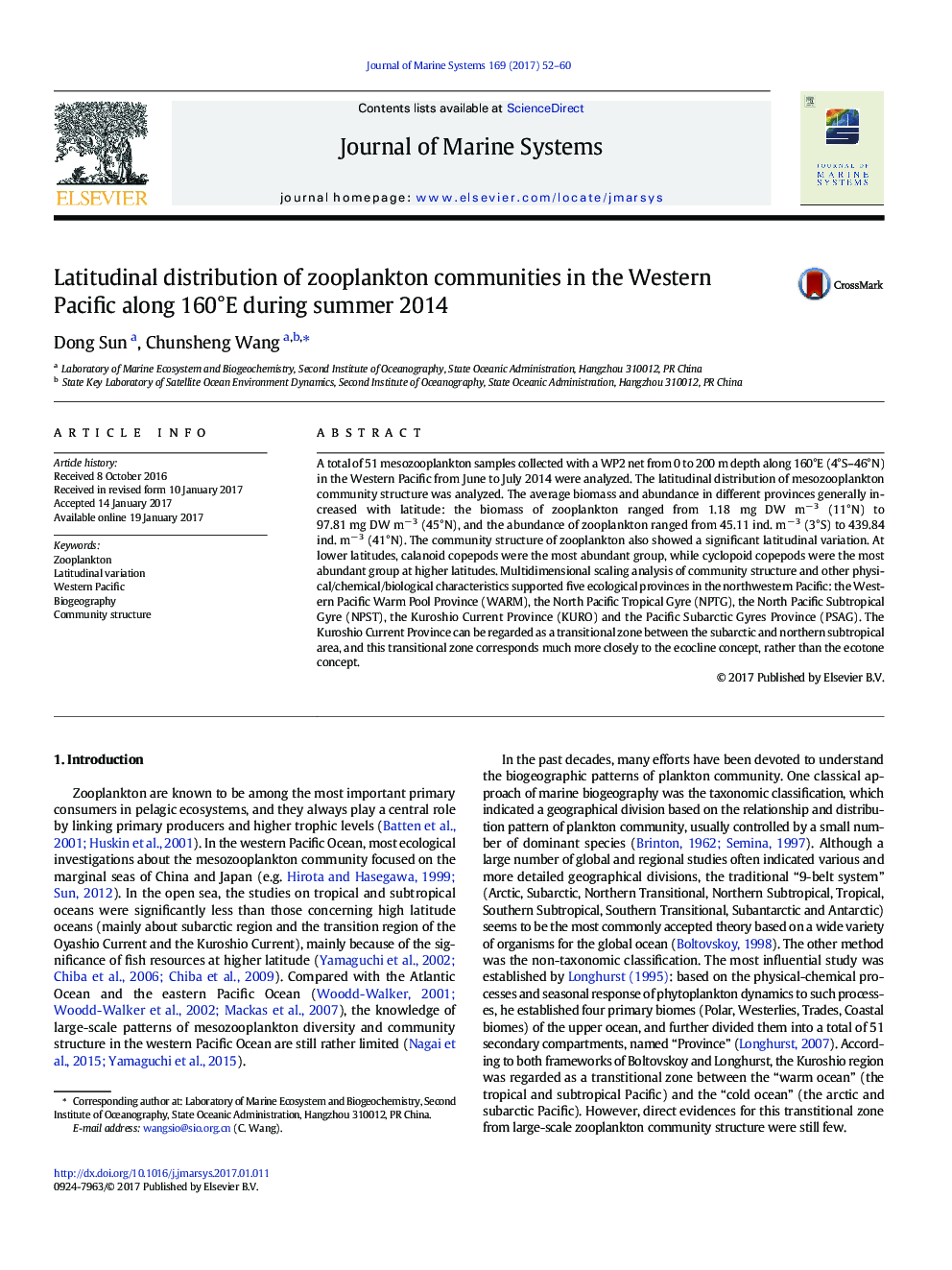| کد مقاله | کد نشریه | سال انتشار | مقاله انگلیسی | نسخه تمام متن |
|---|---|---|---|---|
| 8886042 | 1627261 | 2017 | 9 صفحه PDF | دانلود رایگان |
عنوان انگلیسی مقاله ISI
Latitudinal distribution of zooplankton communities in the Western Pacific along 160°E during summer 2014
ترجمه فارسی عنوان
توزیع عرضی جوامع زئوپلانکتون در غرب اقیانوس آرام در طول تابستان سال 2014 به میزان 160 درجه سانتیگراد
دانلود مقاله + سفارش ترجمه
دانلود مقاله ISI انگلیسی
رایگان برای ایرانیان
کلمات کلیدی
زئوپلانکتون، تنوع عرضی، غرب اقیانوس آرام، بیوگرافی ساختار جامعه،
موضوعات مرتبط
مهندسی و علوم پایه
علوم زمین و سیارات
اقیانوس شناسی
چکیده انگلیسی
A total of 51 mesozooplankton samples collected with a WP2 net from 0 to 200 m depth along 160°E (4°S-46°N) in the Western Pacific from June to July 2014 were analyzed. The latitudinal distribution of mesozooplankton community structure was analyzed. The average biomass and abundance in different provinces generally increased with latitude: the biomass of zooplankton ranged from 1.18 mg DW mâ 3 (11°N) to 97.81 mg DW mâ 3 (45°N), and the abundance of zooplankton ranged from 45.11 ind. mâ 3 (3°S) to 439.84 ind. mâ 3 (41°N). The community structure of zooplankton also showed a significant latitudinal variation. At lower latitudes, calanoid copepods were the most abundant group, while cyclopoid copepods were the most abundant group at higher latitudes. Multidimensional scaling analysis of community structure and other physical/chemical/biological characteristics supported five ecological provinces in the northwestern Pacific: the Western Pacific Warm Pool Province (WARM), the North Pacific Tropical Gyre (NPTG), the North Pacific Subtropical Gyre (NPST), the Kuroshio Current Province (KURO) and the Pacific Subarctic Gyres Province (PSAG). The Kuroshio Current Province can be regarded as a transitional zone between the subarctic and northern subtropical area, and this transitional zone corresponds much more closely to the ecocline concept, rather than the ecotone concept.
ناشر
Database: Elsevier - ScienceDirect (ساینس دایرکت)
Journal: Journal of Marine Systems - Volume 169, May 2017, Pages 52-60
Journal: Journal of Marine Systems - Volume 169, May 2017, Pages 52-60
نویسندگان
Dong Sun, Chunsheng Wang,
